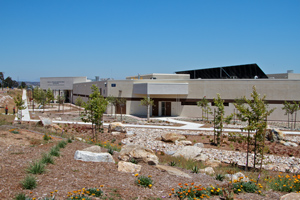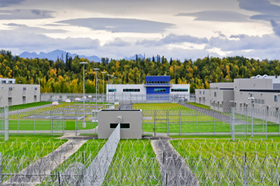DBIA Recognizes Three Correctional Facilities for 2012
 WASHINGTON — The Design-Build Institute of America (DBIA) 2012 Award Winners have been made public, for the first time ever, in advance of its annual conference, scheduled for Nov. 7-9 at the Ernest N. Morial Convention Center in New Orleans, La.
WASHINGTON — The Design-Build Institute of America (DBIA) 2012 Award Winners have been made public, for the first time ever, in advance of its annual conference, scheduled for Nov. 7-9 at the Ernest N. Morial Convention Center in New Orleans, La.
To be considered for an award by the DBIA, projects must be on time, on budget, delivered without litigation or injury. They also must be delivered under one contract that delivers design and construction services with a single point of responsibility; however the contract does not have to be one of DBIA’s standard contractual forms.
 “These awards are made at the discretion of jury. They are under no obligation to award a specific number of projects. For example we received five submissions in the correctional category but just three were awarded,” said Susan Hines, managing director, public relations and information, at the Design-Build Institute of America.
“These awards are made at the discretion of jury. They are under no obligation to award a specific number of projects. For example we received five submissions in the correctional category but just three were awarded,” said Susan Hines, managing director, public relations and information, at the Design-Build Institute of America.
“While these baseline criteria are stringent, as the only organization that defines, teaches and promotes best practices in design-build, DBIA also stresses the application of design-build best practices throughout the project. These are proven means and methods of ensuring success for owners and practitioners engaged in design-build. Most DBIA best practices are aimed at increasing the level of integration and collaboration across the project team.”
The winners in the correctional category for 2012 included one privately-owned facility, Riverbend Correctional Facility, in Milledgeville, Ga., which received an honor award; the Joint Regional Correctional Facility Southwest, MCAS Miramar, a brig with 200 precast concrete cells for detainees, which received a merit award; and receiving the DBIA’s highest honor, as the sole DBIA national award winner, Goose Creek Correctional Center, in Wasilla, Ala.
 “Goose Creek is a particularly stunning example of what ‘design-build, done right’ means,” said Hines. In addition, to its completion, a full five months ahead of schedule, Hines outlined some highlights about the project:
“Goose Creek is a particularly stunning example of what ‘design-build, done right’ means,” said Hines. In addition, to its completion, a full five months ahead of schedule, Hines outlined some highlights about the project:
• A concerted effort was made to apply DBIA best practices from the RFQ stage through project closeout.
• Neeser Construction Inc. (NCI) had an in-house design-build coordinator with 32 years of design-build experience to manage the integrated process.
• Designer and major subcontractor selection was based on previous teaming experience and compatibility. MEP, electronic security, correctional hardware, and fire protection subcontractors were engaged at the beginning of the RFQ stage.
• Design and budget goals were established at the outset.
• The owner and end users were fully engaged in the process beginning with three separate proprietary meetings during the competitive RFP stage and continuing throughout design and construction of the project.
• Clear lines of responsibility and authority were established up-front.
• Co-location of designers, consultants, and out-of-town specialty contractors, was agreed upon and implemented.
• Program and technical requirements were cross-verified between design disciplines, NCI team participants, and the team subcontractors.
• Face-to-face design-build coordination and progress meetings were pre-scheduled and agreed to for the competitive and for the design after award phases.
• Design progress meetings with the owner and end users were scheduled well in advance. For each design level a two-day review meeting was scheduled for mid-point, and three to four days at design delivery.
• Design corrections and modifications were annotated and logged. Action items were assigned, and agreed modifications were incorporated into the design (clouded) for reconciliation at the next mid-point and design delivery review meetings.
• The team members relied on each-other and their professional judgment, communicated openly, honestly and respectfully.
